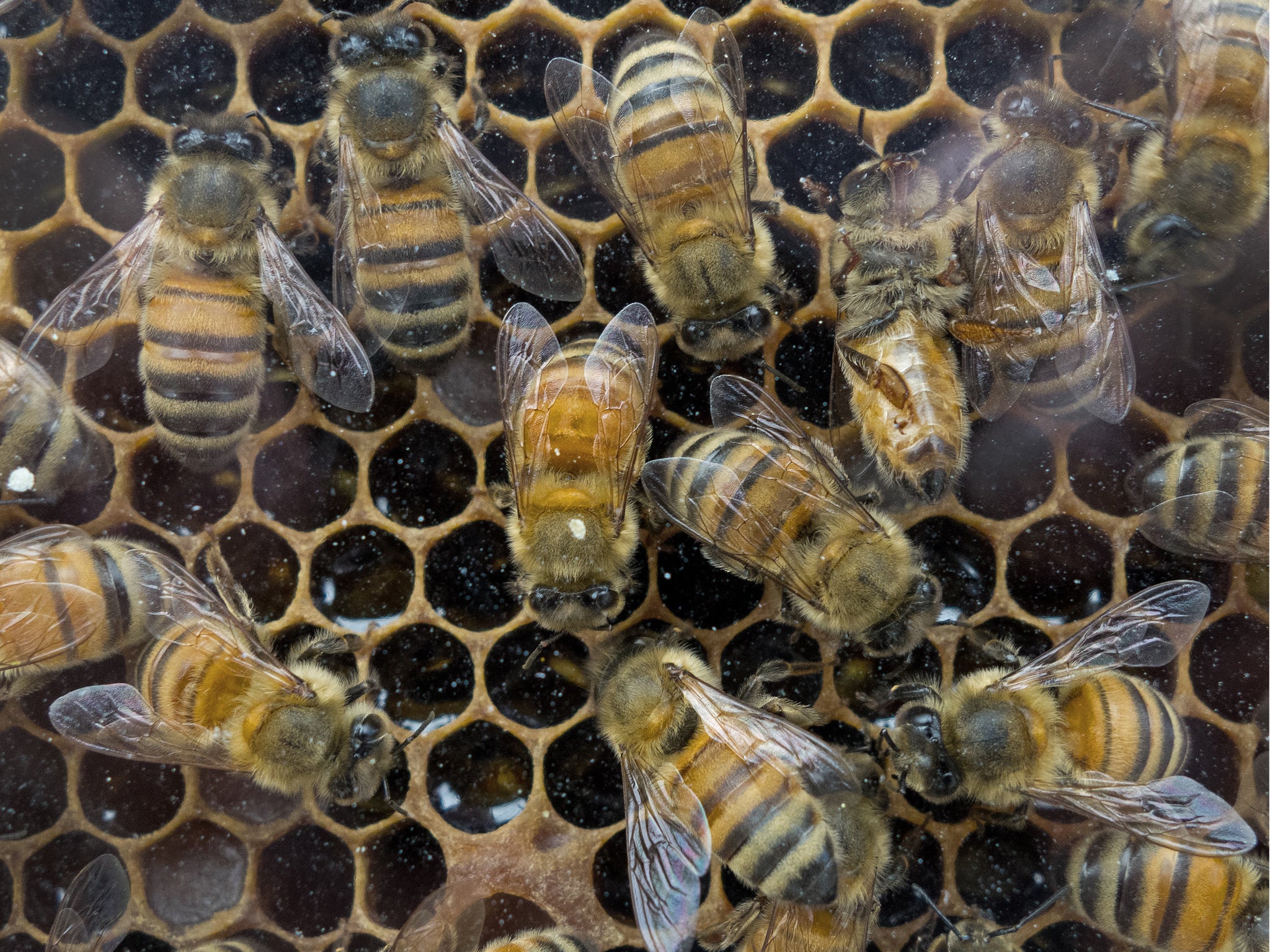Honeybees suffer learning difficulties after ingesting tiny quantities of pesticides, study finds
Substance harmful to the insects commonly used around the world

Honeybees can suffer from “severe” learning difficulties and memory problems after ingesting tiny quantities of a type of pesticide, new research indicates.
Bees studied at the University of Otago, in Dunedin, New Zealand, were affected by levels of the pesticide chlorpyrifos that are classified as “safe".
Researchers believe the effects have the potential to threaten the success and survival of the species.
The study tested honeybees in outdoor hives and laboratory conditions.
A total of 51 bees were collected from 17 locations across the province of Otago in Southern New Zealand.
Low levels of pesticide were present in bees from six hives at three of the sites.
Similar levels of chlorpyrifos were then administered to honeybees in a laboratory. The bees were then subject to learning performance tests.
The bees which ingested chlorpyrifos were found to fare poorly in tests designed to measure odour learning and recognition.
Study lead author Dr Elodie Urlacher said: “The dosed bees were less likely to respond specifically to an odour that was previously rewarded.”
Dr Ulkacher expressed concern that this could threaten the survival skills of honeybees.
“As honeybees rely on such memory mechanisms to target flowers, chlorpyrifos exposure may be stunting their effectiveness as nectar foragers and pollinators," she said.
The study also found the minimum amount of pure chlorpyrifos that needs to be ingested to have an effect on learning and memory is 50 picograms (0.05 nanograms) of chlorpyrifos per bee.
As low levels of chlorpyrifos are not likely to cause a short-term drop in the number of honeybees, in the longer run their survival skills may suffer, putting them at risk.
"This amount is thousands of times lower than the lethal dose of pure chlorpyrifos, which is around 100 billionths of a gram. Also, it is in the low range of the levels we measured in bees in the field," Dr Urlacher said.
"Our findings raise some challenging questions about regulating this pesticide's use. It's now clear that it is not just the lethal effects on bees that need to be taken into account, but also the serious sub-lethal ones at minute doses."
Chlorpyrifos is used globally to protect food crops against insects and mites, but has previously been crticised as harmful to the environment.
In addition to bees, it has also been detected in water, plant samples and even the air.
Join our commenting forum
Join thought-provoking conversations, follow other Independent readers and see their replies
Comments
Bookmark popover
Removed from bookmarks